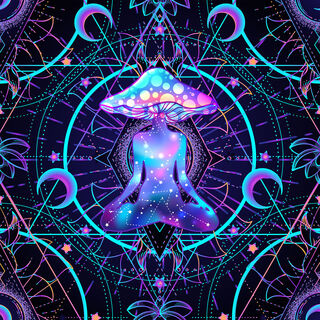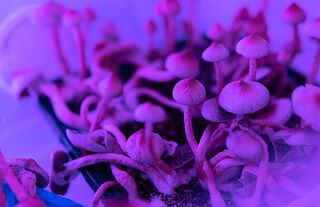Post-Traumatic Stress Disorder
Using Psychedelics to Treat PTSD
Altering consciousness and trauma.
Updated April 18, 2024 Reviewed by Jessica Schrader
Key points
- Post-traumatic stress disorder disrupts the rhythmic function of consciousness.
- Psychedelics could help restore an individual's sense of rhythm and balance.
- Analyzing self-medicating drugs can reveal psychological, biological, and spiritual needs.

Part 1 in a series. Read Part 2.
Though altering our state of consciousness is often demonized, it is essential to understand the use of psychedelics and mind-altering substances for people who treat and/or experience PTSD. Trauma alters consciousness and it is no surprise that upwards of 70 percent of people with PTSD self-medicate to the point of addiction at some point in their lives. Many more use substances but do not become addicted. Substance use intersects both the natural human urge for inner exploration with the need to suppress unpleasant states. Plants and mushrooms and their chemical derivatives are the subjects of general empirical science, Indigenous sciences, and biomedical clinical trials aimed at identifying their application for the treatment of PTSD, depression, anxiety, addiction, insomnia; and as a catalyst for spiritual and post-traumatic growth. It is at this intersection that a therapeutic approach to understanding psychoactive states and balances can be explored.
Throughout my book Rhythms of Recovery, Trauma Nature and the Body (Korn, 2013), I have argued that PTSD disrupts the rhythmic function of consciousness and that our work must be to help our clients find ways to restore their sense of rhythm and balance; and to learn methods that they can use at home and under the supervision of therapists, healers, and guides.
Spiritual Nourishment for PTSD
The addicted brain needs physical nourishment and the brain/mind also needs spiritual nourishment that derives from transcendent vision and ongoing rituals of connection with others. Interestingly, the primary pharmacological treatment for PTSD and depression involves enhancing the serotonergic and dopaminergic/GABA systems in the brain. Not surprisingly, botanical medicine, hallucinogens, and entheogens interact with these same systems. As I elsewhere note, there are many routes to GABA besides benzodiazepines. Nature provides an abundance of plants for this purpose. This reality suggests that successful treatment of PTSD may be more about what path we take to arrive at the synapse. As we shall see, the entheogens are serotonergic agonists; more than one client has started on Prozac and said, “Gee, it feels like acid!”

Spirit molecules are used by people with PTSD and most have been or are the subject of ongoing clinical research for the treatment of PTSD or the sequelae. Because of the range of effects of trauma and because they often emerge and resolve and reemerge over the life course, the individual suffering the effects of trauma will have evolving needs over his/her/their life course.
PTSD and Self-Medication
People with PTSD use all kinds of medications to self-medicate. Understanding the types of drugs that people use helps us understand more specifically the psychological, biological, and spiritual needs to address through the conscious use of psychoactive alternatives. With the exception of tobacco, which I include here, because of its historical use as a ritual plant, and its problematic use by people with PTSD, all of these substances show promise as allies along the path of healing. Perhaps the most commonly used plant (besides tobacco) for altering consciousness by people with PTSD is cannabis or marijuana. It also demonstrates favorable effects for the treatment of a variety of symptoms associated with PTSD including depression, anxiety, and pain.
Stay tuned for an upcoming post on psychedelics for trauma, where I will walk you through various approaches to psychedelic use and its benefits.


